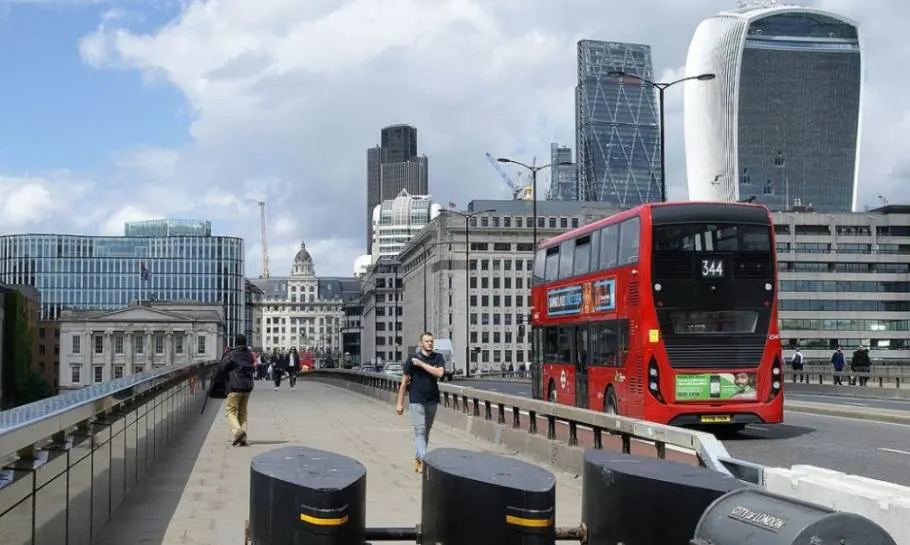Several bridges have spanned the River Thames in London in this exact location.
Just as the Brooklyn Bridge in New York connects Brooklyn with Manhattan, London Bridge connects Southwark (where The Shard is located) with the City of London.
It’s one of the most famous bridges in London, and in this post, you’ll discover the ultimate list of facts about London Bridge, one of the most important bridges in the world.
1. Where is London Bridge located?
The London Bridge connects the old historical center and the primary business district of the City of London (where we can find the Gherkin) with the Southwark district.
It’s a box girder bridge built from concrete and steel. was constructed in 1973 when it replaced a 19th-century version of the bridge.
A box girder bridge means that the main beams are made out of girders that resemble a hollow box, and are made out of reinforced concrete and steel.
It’s one of the most significant bridges spanning the River Thames in London. Before a bridge was built at its location, London didn’t exist!

2. Who built London Bridge?
Julius Caesar was the first Roman Emperor to invade Britain and did so twice in 55 and 54 B.C.
The Romans were the first to build a bridge on the location of London Bridge. They initially built a pontoon bridge, a floating bridge held together with boats to allow the Roman army to easily cross the River Thames.

After about a century of the Roman occupation of Britain in 55 A.D., a permanent piled bridge was constructed which was made of wood. It was permanently guarded on the north side by a group of Roman soldiers.
Eventually, settlements emerged on both sides that grew into the town of Londinium.
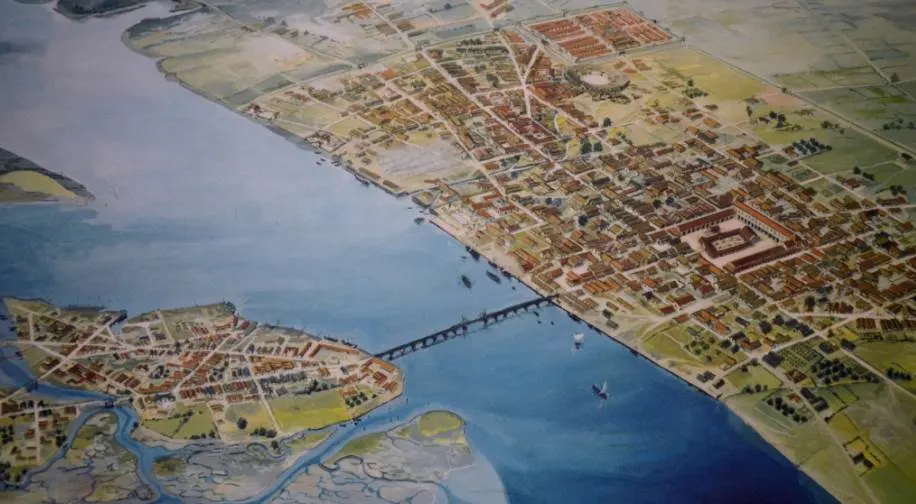
3. The Ancient London Bridge was destroyed?
When the Roman occupation of Britain ended, Londinium was gradually abandoned.
The bridge built by the Romans eventually got destroyed and formed a boundary between the kingdoms of Mercia and Wessex who were enemies during the Anglo-Saxon period.
The Roman wall built around Londinium, one of the major completed projects by the Romans in Britain, did survive, however, and formed the border of the old City of London.
4. London Bridge was rebuilt multiple times
It’s very likely that Alfred the Great rebuilt the bridge and also the city of London in the 9th century when he created the system of Burhs. This also included a burh that transformed into Warwick Castle.
Another reason it was rebuilt was to better prepare against the invasion of the Danes in the late 9th century.
It was destroyed and rebuilt multiple times until the final wooden bridge, believed to be timber, was built in the year 1163.
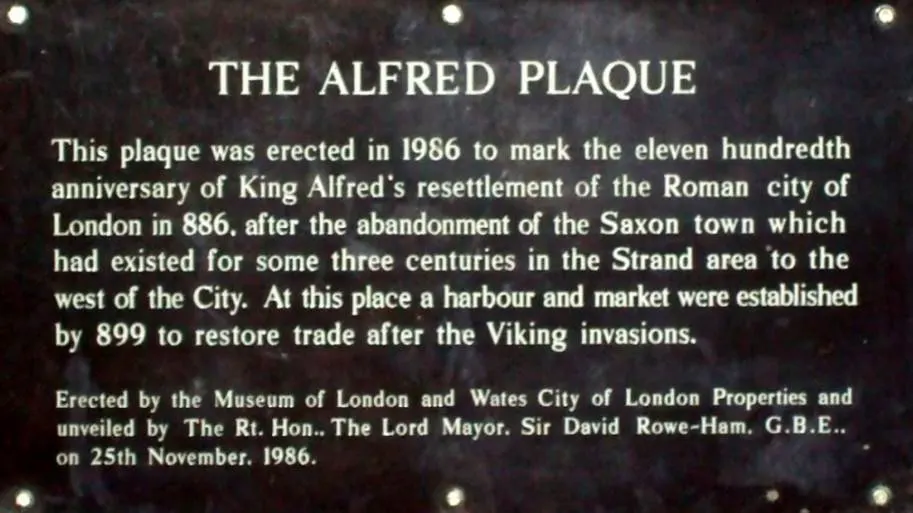
5. The first stone London Bridge
In the year 1170, the then Archbishop of Canterbury, Thomas Becket, was murdered. He was a well-liked Londoner and reigning King Henry II commissioned the construction of a stone bridge
In the middle, there was a chapel honoring Becket, and construction of the bridge began in 1176 and wasn’t finished until 1209 under the reign of King John.
There was a huge problem though! The construction had a huge price tag attached to it, meaning King Henry II needed to raise taxes on wool and sheepskins.
Fun fact about the first stone London Bridge: Raising taxes on wool started the story that London Bridge was built on wool packs.

6. London Bridge became very crowded
As more and more buildings were constructed on London Bridge, it became a small neighborhood in itself.
Some of the structures were up to 7 stories high, some were even overhanging the water and others were overhanging the road, creating a tunnel-like effect through which traffic had to pass.
Apart from the collapses of arches carrying the heavy load of all the structures that were built on top of the bridge, the biggest problem was the danger of fire. Numerous fires have occurred on London Bridge during the late Middle Ages up until the Renaissance.
7. All buildings on London Bridge were demolished
The last houses that were ever built on London Bridge were constructed in 1745, but they didn’t last long.
Due to the increasingly dangerous situation and the urgent need for bridge renovations, The “London Bridge act” allowed the City Corporation (that still exists today) to buy all properties that were built on the bridge.
This happened in 1756 and shortly after they were demolished and the bridge got the renovation it so urgently needed.
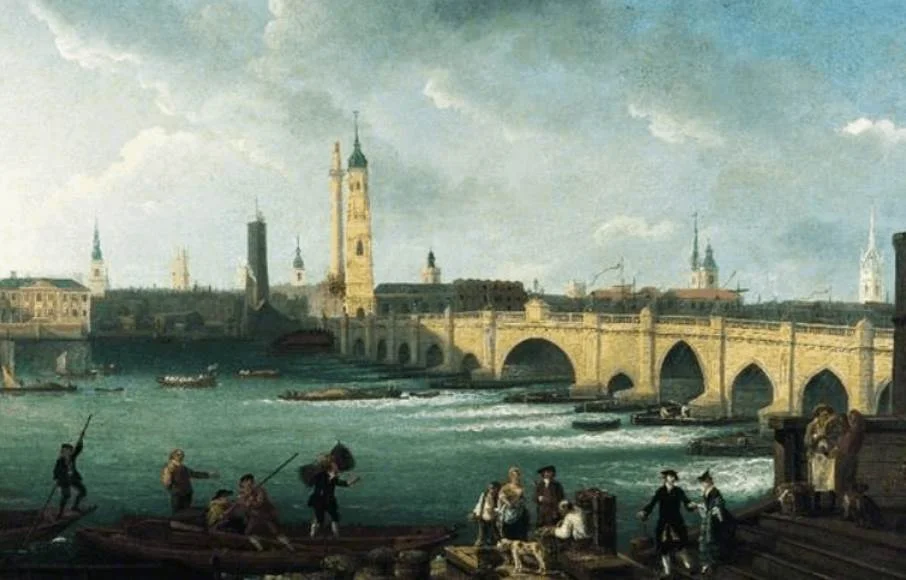
8. The medieval bridge was replaced
In 1799, it was decided that the medieval bridge needed to be replaced with a “New London Bridge.” For this, an architectural competition was held that year.
An initial design by Thomas Telford, which was accepted at first, had to be revised after the findings in the preliminary surveys. It was too wide and would have required valuable buildings to be destroyed.
The eventual design that was chosen contained 5 arches and was designed by John Rennie. Construction of the bridge started in 1824 under the supervision of Rennie’s son who had passed away 3 years earlier.
An interesting fact is that the medieval version of the London Bridge was only destroyed after the new bridge was completed in 1832.
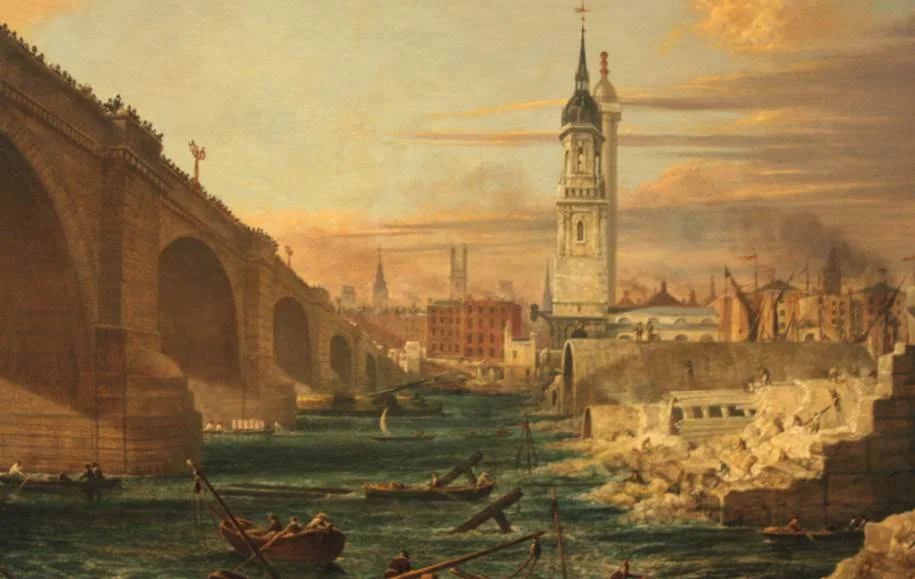
9. The final version of London Bridge was built
Finally, the construction of the London Bridge we know today started in 1967 and was officially opened by Queen Elizabeth II on March 17, 1973.
The modern London Bridge was built in the same location as the previous bridge. Traffic was diverted onto the old bridge while the first two girders were built and subsequently demolished when the construction of the final central girders started.
The London Bridge isn’t the most spectacular in the world and has a very basic design. What makes it so special is its history for the city of London, which started as a Roman settlement named Londinium built next to the ancient version of London Bridge.
10. Rennie’s bridge is still alive
One of the most interesting facts about London Bridge is that there are 2 London Bridges.
Back in 1967, the Common Council of the City of London was looking to find somebody who would like to buy London Bridge.
Like cutting it up into pieces and allowing it to be reassembled like a big bridge made of LEGO blocks.
Against all odds, the bridge was sold to Missourian entrepreneur Robert P. McCulloch of McCulloch Oil for USD 2,460,000 on April 18, 1968, rebuilt at Lake Havasu, Arizona, and inaugurated on October 10, 1971.
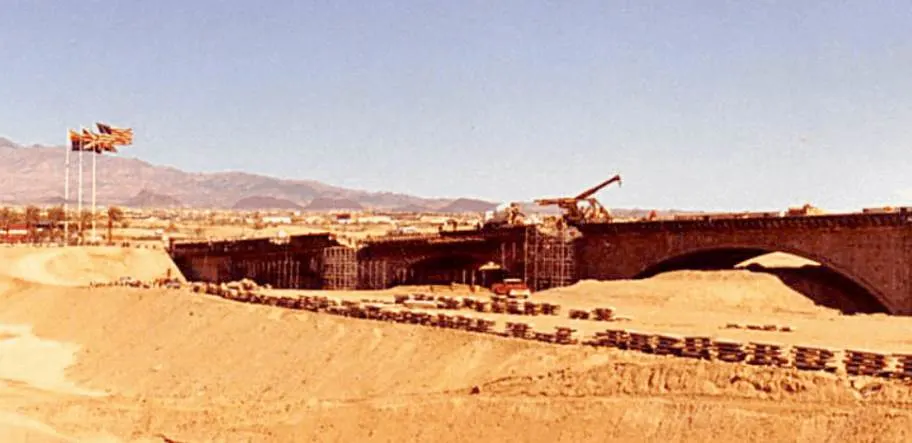
More fun and interesting facts about London Bridge
11. Up until the year 1729 when the Putney Bridge opened, London Bridge was the only bridge crossing the River Thames that was located downstream of Kingston upon Thames, which is located in west London.
12. Up until the medieval version of London Bridge, the endpoints were marked by the church of St Magnus-the-Martyr in the north and by Southwark Cathedral in the south. This means the bridge has moved 30 meters (98 ft) upstream when the new versions were built.
13. The medieval bridge was far from an architectural masterpiece. It’s believed the bridge was about 8 meters wide (26 ft) and about 240-270 meters long (800-900 ft) long. Most importantly, it had about 19 arches supporting it which were placed irregularly, frequently resulting in parts of the bridge collapsing under the weight of the building built on top of it.
14. Ever heard the nursery rhyme “London Bridge is falling?” It’s based on the shabby construction that resulted in the frequent collapse of the medieval bridge.
15. London Bridge used to have 2 gatehouses on each end. Crossing London Bridge wasn’t a jolly stroll on a Sunday afternoon in the early 16th century. While passing the gatehouses you were certainly reminded to be an obedient citizen. If you look closely at the 1616 engraving below, you can see the spiked heads of executed criminals on top of the Southwark gatehouse!
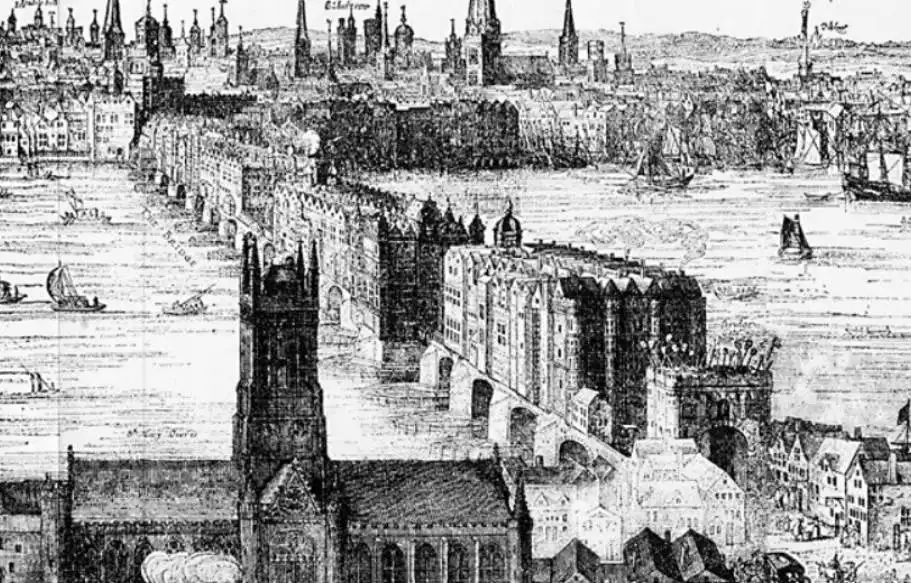
Those were the days, weren’t they?
16. Ever wonder what the story of those executed prisoners was? You can learn a few in a tourist attraction called the “London Bridge Experience.” Actors guide you through the history of London, and one of the topics is whose heads are on the spikes you see above. A little spoiler: The first head to appear there was that of William Wallace (yes the dude from Braveheart) and some of them were noblemen, even princes!
17. In 1381, the “black death” caused a huge number of people to die from the plague. This caused a lot of tensions resulting in the “Peasants’ Revolt,” also referred to as the “Great Revolt.” Just about all the houses on London Bridge were burned in the chaos.
18. But that’s not the only time London Bridge caught fire. In 1633, a huge fire destroyed part of the northern end of the bridge, which wasn’t repaired. Luckily they didn’t do so, because that created a firebreak during the biggest fire ever in London, the “Great Fire of London” in 1666, which destroyed about 80% of all the homes in the city.
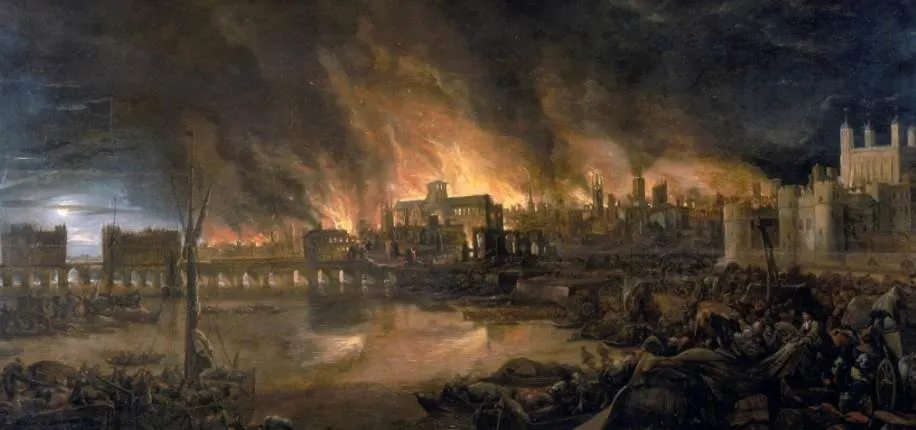
19. Crossing London Bridge was quite spooky in the 16th century. During the Tudor Period, which lasted from 1485 until 1603, London Bridge had about 200 buildings on it. Crossing it must have been pretty hectic because some of the buildings were overhanging the road, creating dark tunnels through which all the traffic had to pass.
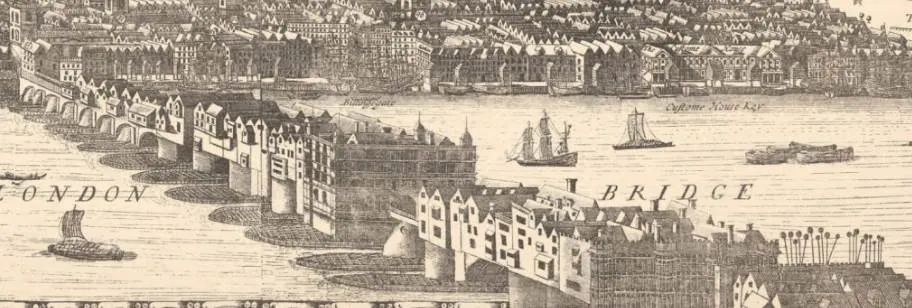
20. Why does traffic in the UK drive on the left side? One possible reason might be that the congestion of London Bridge was getting so serious that the Lord Mayor issued a decree saying:
“All carts, coaches and other carriages coming out of Southwark into this City do keep all along the west side of the said bridge: and all carts and coaches going out of the City do keep along the east side of the said bridge.”
21. Getting across the river over the bridge was easy. Getting under it by boat was much more complicated. The 19 arches leaving less space for boats to pass in combination with a wild River Thames made it a very complicated task to get boats through. It’s estimated about 50 boatmen died every year trying to pull it off!
22. The last tenant of the houses that were built on London Bridge moved in the year 1762. That means there was housing on the bridge for over 550 years.
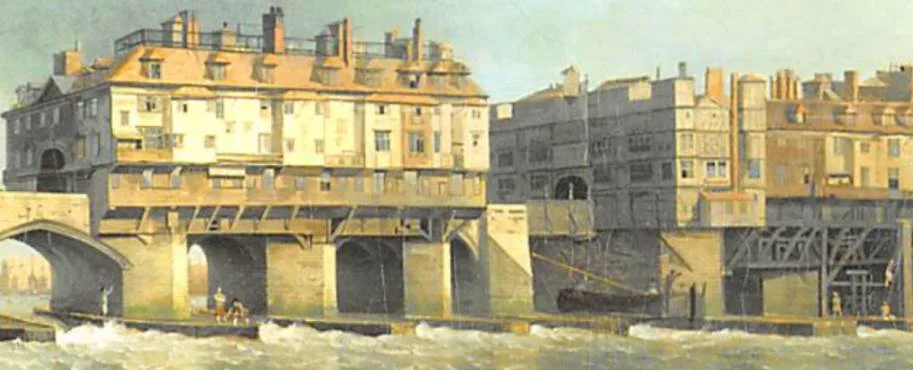
23. Rennie’s London Bridge that was built in 1831 cost a staggering £2.5 million (around £225 million today) to construct. The cost of construction was shared by the British Government and the Corporation of London.
24. The official opening of the New London Bridge took place on August 1, 1831, and was attended by nobody less than King William IV and Queen Adelaide. On this day they could behold the new 283 meters (928 ft) long and 15 meters (49 ft) wide bridge.
25. By the end of the 19th century, London Bridge had become one of the busiest roads in all of London. It’s estimated that about 8,000 pedestrians and 900 vehicles passed it every hour.
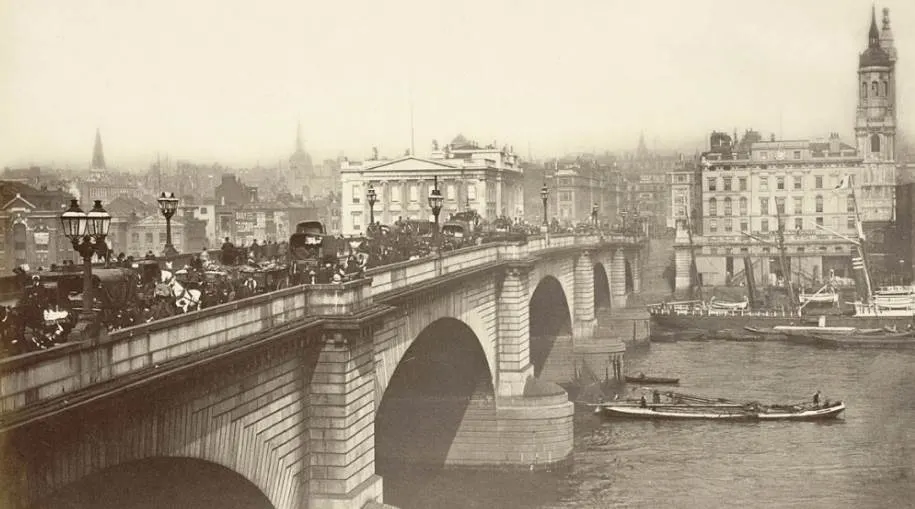
26. The New London Bridge, which remarkably found a new home at Lake Havasu City in Arizona in the United States, is made of Haytor granite. That’s a sort of granite tor coming from the eastern edge of Dartmoor in the English county of Devon.
27. Ivan Luckin is the name of the council member that suggested selling the New London Bridge. When he made the suggestion, they all thought he was crazy. They didn’t think that anymore when they were able to add $2,460,000 to their bank account!
28. Selling a historical building has been repeated! To construct London’s tallest skyscraper “The Shard,” the Baltic Exchange needed to be moved. The owners put it up for sale and it eventually got bought by a businessman in Tallinn, Estonia who plans to rebuild it in his city’s historical center.
29. The newest version of London Bridge costs a total of £4 million to construct. That’s over £55 million today! The cost of construction was completely covered by a fundraiser created by the Bridge House Estates charity.
30. In the early 20th century, it was decided to widen the bridge to ease the traffic congestion on London Bridge. For this project, they went to the same quarry in Dartmoor to get some more granite blocks. They had too many corbels and some were returned. Remarkably, they are still laying around over 100 years later!
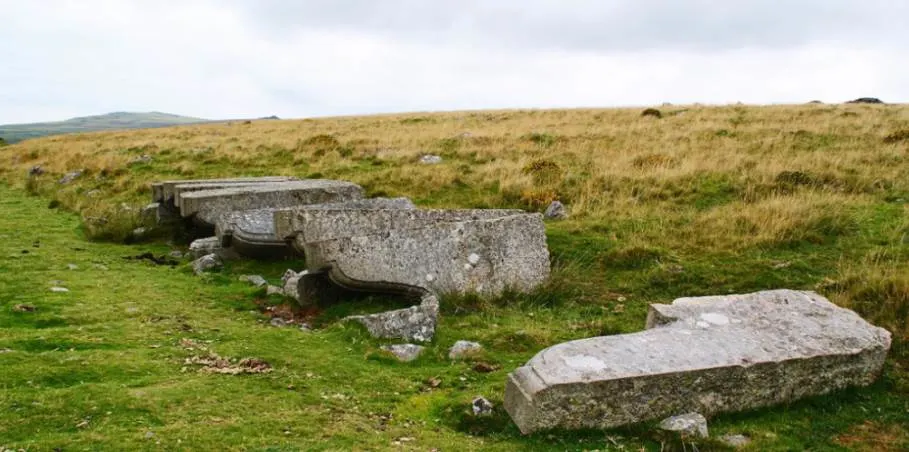
31. A convicted murderer tackled a deranged terrorist on London Bridge on November 29, 2019. The terrorist eventually got shot and killed by police, and the convicted murderer who became the unlikely hero that day is about to get a medal for his bravery from Boris Johnson. It’s a pretty remarkable situation, to say the least.
